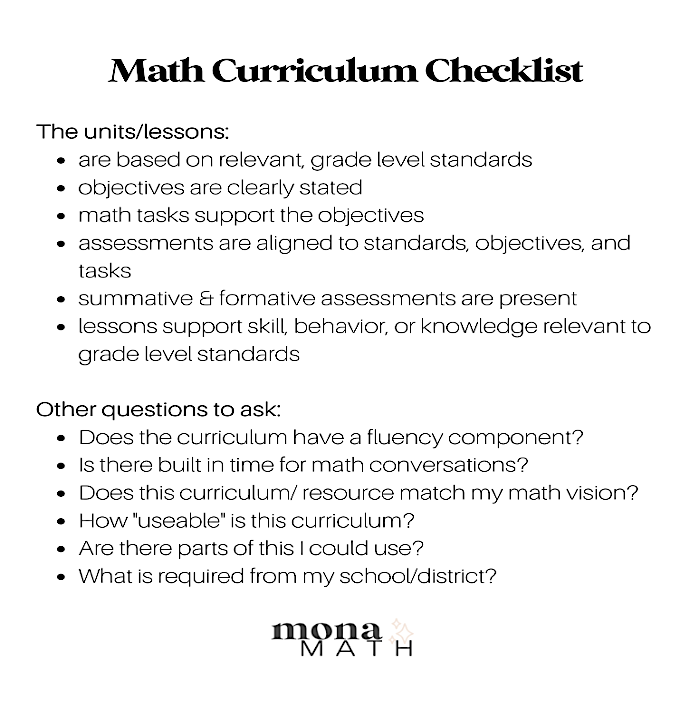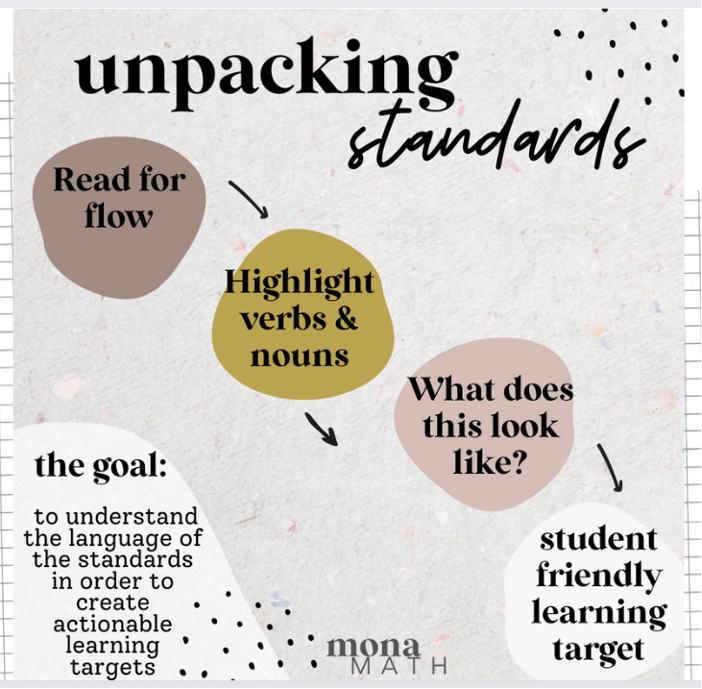How to Make Math Class Student Centered
By Mona Iehl
 Every year, as schools reopen, teachers encounter waves of new ideas and initiatives. It’s the season of new beginnings, and the ideas often become additions to our ever growing to-do list.
Every year, as schools reopen, teachers encounter waves of new ideas and initiatives. It’s the season of new beginnings, and the ideas often become additions to our ever growing to-do list.
It is easy to feel that all those shiny new ideas are essential, and the to-do list can quickly become lots of extra hours needed to prepare for and begin our year with our new group of students.
However, as school begins we must remember that by focusing on just a few essential things, we can be better prepared for a successful year and avoid the “overwhelm.”
In this article I want to suggest three actions that are most deserving of your time and energy as you set out to launch your student centered math class successfully.
As a math teacher I value creating a learning space where my students can develop independently and achieve more than they thought possible. Creating a student centered math class allows students to learn – through problem solving experiences, hands-on exploration, and student centered discussions – that math is something they can do well and even learn to love.
In a student-centered model, teachers facilitate lessons to empower students to build new math knowledge using their existing understanding. When creating a student centered math class, it is important to consider three essential elements: your community, your curriculum, and your lessons.
Number 1: Make a plan for your classroom community
We can all agree that in the first weeks developing a classroom community is essential. We want our classrooms to be safe places for students where everyone feels welcome and has a sense that they belong.
We also can all agree that forming this community is hard work. Students enter our math class with different levels of background knowledge. They also bring a variety of feelings about math, both positive and negative. Due to the ever so common math anxiety and general dislike for math in our society, it’s essential that we cultivate a strong and supportive math community inside our classroom walls.
Start a plan for your classroom community by establishing a vision for your math class. Imagine what your math class will look like, sound like, and feel like. This will help you think about the type of classroom community you will create.
Then you can consider what roles your students will take in the classroom as well as what role you will play. It is helpful to put your ideas in writing and share with stakeholders like colleagues, parents and students. This math vision will be your guiding light as you plan to teach about math mindset, develop relationships and establish norms.
After you have your plan, you will start to make decisions about how to create a math classroom community. You’ll use your math vision to make decisions about what routines to teach your students and what expectations to communicate in the first weeks.
Number 2: Get to Know Your Resources
There is no shortage of math classroom resources, activities, printables, and ideas on the internet. However, before you buy anything or make anything, it is important to get to know what you already have access to in your classroom and school.
Take a look at the current curriculum materials. Consider if the curriculum matches the priorities of your math classroom vision. You can use the curriculum checklist below to help you as you review your curriculum.

The standards for your grade level are probably your most important resource. Spend some time “unpacking” the standards. This will help you understand the skills and content your students are expected to master by the end of the year. With this knowledge you can choose objectives for units and begin to differentiate lessons.
Number 3: Consider Lesson Plan Formats
Facilitating a math class that centers on your students’ thinking and builds from their strengths while pushing them to meet rigorous standards requires you to consider lesson format. Lesson format is how you maneuver the parts of your lessons in your math block. Some common lesson plan formats include direct instruction, inquiry, problem-based learning, and workshop.
Your curriculum is a great place to start exploring ideas for how to structure your daily lesson plan. The structure of your lesson will help you boost engagement. I suggest considering the addition of hands-on experiences and opportunities for students to share and discuss. Building in a problem solving lesson plan format will help your students both grapple with content and develop their ability to explain their reasoning and mathematical thinking.
My personal favorite lesson plan format allows students to build investment, grapple with a problem independently, and then share and discuss their ideas. I explain more about this 4-step approach in this episode of Honest Math Chat podcast. (Audio starts at 45 seconds.)
However, the format of any lesson is dependent on the students you’re teaching, the standard you’re helping students achieve, and the formative data you have collected about how students are achieving. Your lesson plan format will change based on what your students need. So prepare yourself by seeking out different formats and being open to trying them.
Simplify to Center on Students
As we start this year, I hope you’ll spend time thinking about how you can simplify to really focus on your students. By doing less and instead focusing on teaching with greater impact, I’m hopeful you can find balance. With a clear math vision, a commitment to creating a safe community, and the flexibility to let our lessons be responsive to our students’ needs, we form a fulfilling and joyful student centered math classroom.
Mona Iehl (@HelloMonaMath) is a fifth- and sixth-grade math teacher in Chicago, Illinois. Mona started her 14-year year teaching career in the primary grades but found her home in the middle grades six years ago. For more details about her teaching methods, visit her website and see her other MiddleWeb posts here. Mona recently took her passion for helping teachers and students find their inner mathematician to a podcast. Listen in at @HonestMathChat.



































